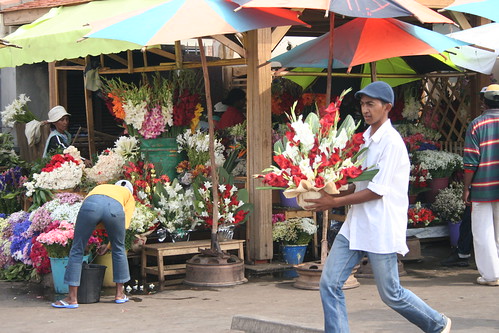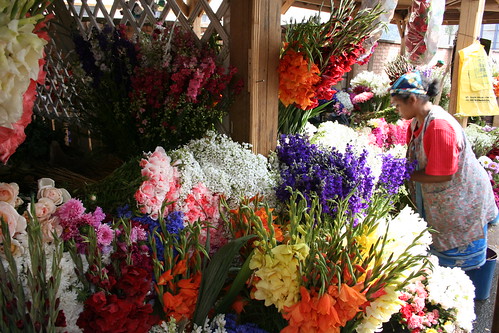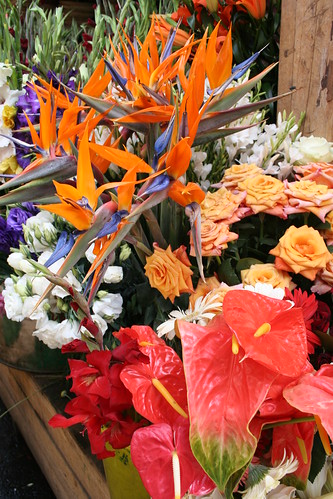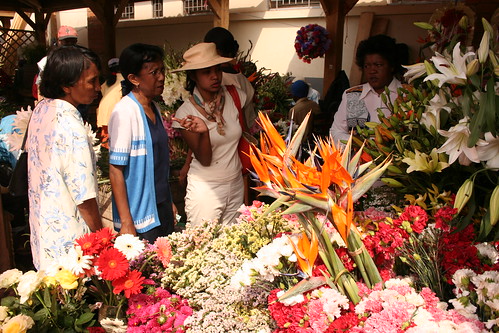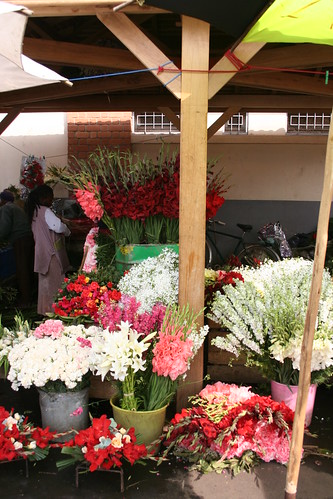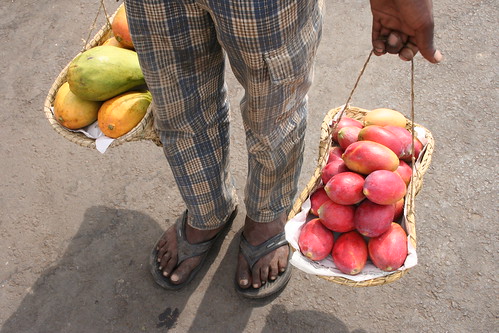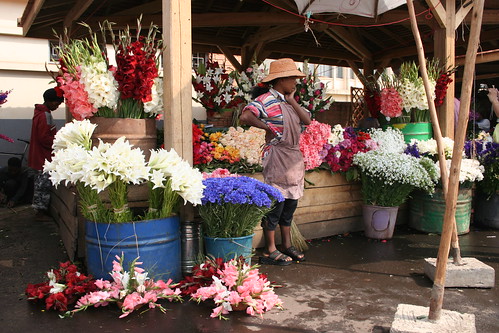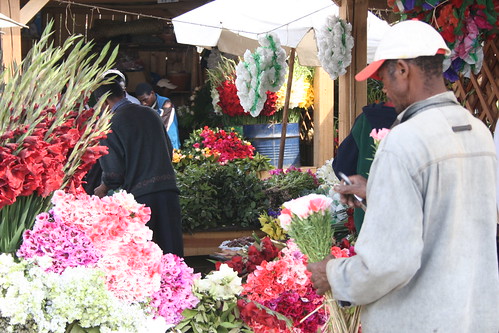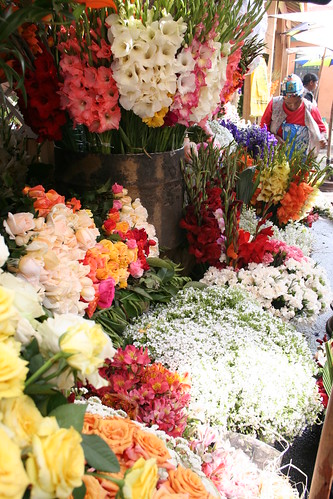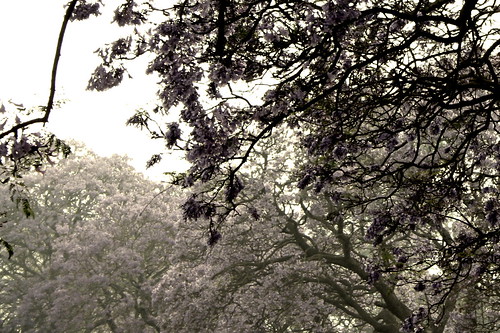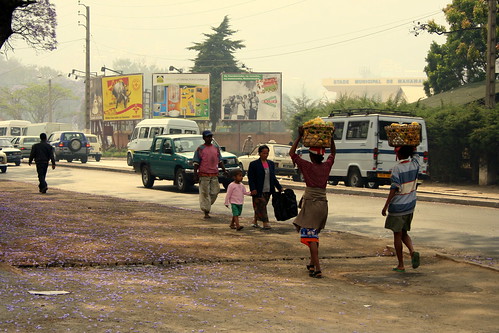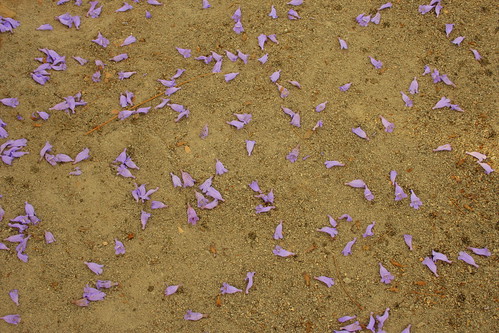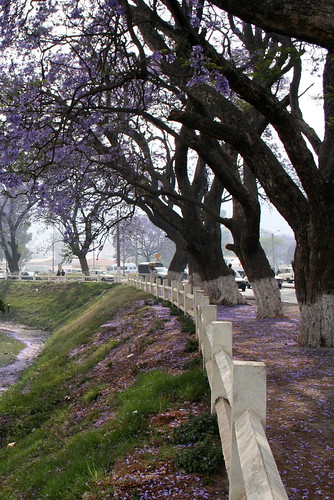Madagascar is an island nation isolated from most of the world. Eastwards and northwards, it’s just the big empty Indian Ocean. To the west is its nearest continental neighbor, Mozambique, but there’s the treacherous channel that is three hundred miles. As if sheer distance is not enough, its capital, Antananarivo or Tana for short, is protected by a geographic elevation of some 1,300 kilometers above sea level.

the cathedral sits on a hill with an elegant wide driveway
Canon EOS 350D Digital, 1/200s, f/9.0, 24mm, ISO 100
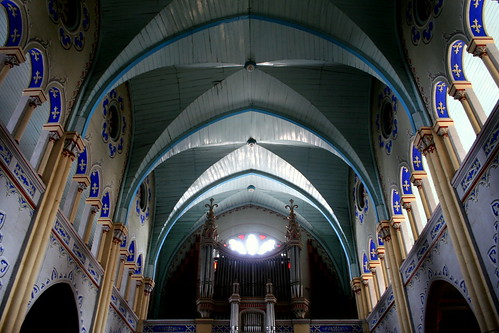
what the Malagasy could not do in stone and tiles, they did in hardwood and decorative painted patterns
Canon EOS 350D Digital, 1/15s, f/5.6, 18mm, ISO 200
Imagine what traveling to the island some hundred years ago, before airplanes and sea freighters. The French certainly struggled in wrestling control of the island from the British in the notorious Scramble for Africa. It took brawn, might and cunning of imperial France to finally annex Madagascar in the late 1800s.

an ornate niche featuring the image of St. Joseph
Canon EOS 350D Digital, 1/2s, f/5.6, 18mm, ISO 200
Today, more than four decades after decolonization and full independence, Madagascar still exhibits a strong French feel. The country mostly understands and speaks French. The languid ambiance of tree-lined avenues and café-flanked boulevards persists. And there is religion. Almost half of the Malagasy are also Christians, about 50% of which are Roman Catholic.

the tracery window is simple and geometric and in various tones of blue
Canon EOS 350D Digital, 1/50s, f/5.6, 42mm, ISO 200
Of the numerous churches that were built during colonial rule, one which symbolizes the quiet elegance and regality of the French is the Cathedral of Ambodin Andaholo.

the massive wooden front door is made light and airy with the floral-motif wooden cutwork
Canon EOS 350D Digital, 1/200s, f/9.0, 22mm, ISO 100
Catholic missionaries first set foot on the island in the 1860s. As the royal Malagasy court did not allow proselytization, Jesuit priests came in disguise. Although Europeans were soon expelled from the country by the Queen Ranavalona I, the Jesuits befriended her son, Radama II. It was when he succeeded his mother that he eventually welcomed the missionaries back to the island. In 1873, the Catholic mission was given the land in Andohalo of what was then Tananarivo. Here, the cathedral was built, based on the design by Father Alphonse Taix, a Jesuit. It took 17 years to complete the cathedral and in 1890, it was consecrated as Cathédrale de l’Immaculée Conception d’Andohalo or the Cathedral of the Immaculate Conception.

outside is a grotto of the Lady of Lourdes
Canon EOS 350D Digital, 1/60s, f/5.6, 24mm, ISO 100
A testament of local ingenuity, the church features no frescoes, mosaics, cutout filigrees and rose windows often associated with French cathedrals. The door omits the carved reliefs although the lintel offers an almost naively simplified floral tracery that is repeated in several of the arch windows. In place of murals, the groin vault ceiling of hardwood was enamel-painted in the light shades of blue. Statuaries are sparse. Arches bear semblance to the Islamic ogee. Along the nave, the edges of the columnade were painted with dainty patterns in royal blue. The only obvious concessions to neo-Gothic complication were the the slit windows which show off imported stained glass panels of Catholic church figures and the tile trim around the recessed niches.
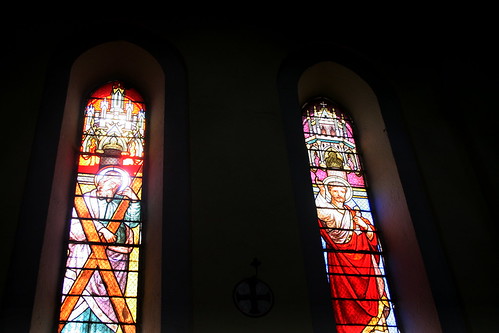
the narrow vertical windows at the sides boasts of imported French stained glass panels
Canon EOS 350D Digital, 1/30s, f/5.6, 27mm, ISO 200
For a church that was expected to be showcase of the grandiose and of ornamentation, the Cathedral of Tana, offers simplicity that eloquently communicates a sober spiritual grace.

the groin vault ceiling is covered with hardwood, painted in blue hues that evoke of the cerulean skies
Canon EOS 350D Digital, 1/8s, f/5.6, 22mm, ISO 200

